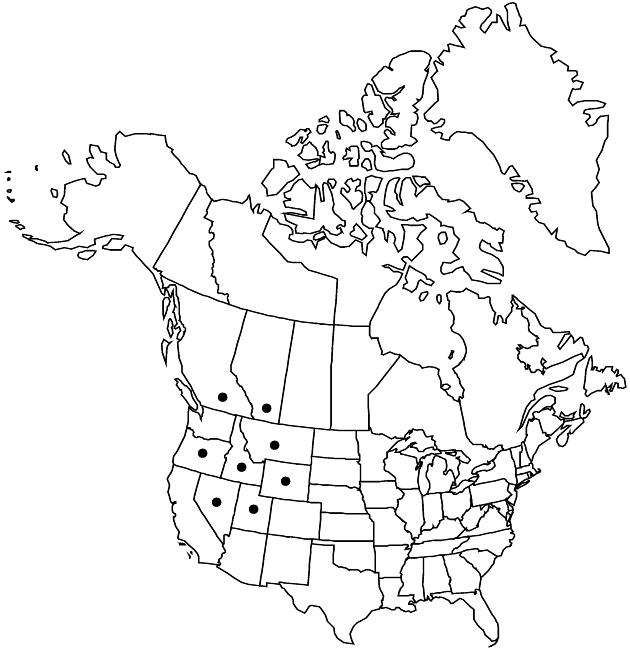Townsendia parryi
Amer. Naturalist 8: 212. 1874.
Biennials or perennials, (2–)5–12(–25+) cm. Stems decumbent to erect; internodes (0.1–)2–12(–25+) mm, strigose. Leaves basal and cauline, blades spatulate to oblanceolate, 15–35(–60+) × 2–5(–8+) mm, not fleshy, faces ± strigose or glabrate Heads at tips of stems (usually surpassed by leaves). Involucres ± hemispheric or broader, 12–25(–35+) mm diam. Phyllaries 40–64 in 4–7+ series, the longer ± lanceolate to lance-linear, 10–15+ mm (l/w = 4–6), apices acute to attenuate (soft, not apiculate), abaxial faces ± strigose or glabrous. Ray florets 21–67+; corollas usually blue or purplish, rarely white or pinkish, adaxially, laminae 7–15(–20+) mm, glabrous abaxially. Disc florets 150–200+; corollas 4.5–6 mm. Cypselae 3–4.5+ mm, hairy, hair tips forked or entire; pappi persistent, of 24–30+ subulate to setiform scales 3.5–4(–7.5) mm. 2n = 18.
Phenology: Flowering May–Aug.
Habitat: Meadows, grassy slopes, gravelly benches, talus
Elevation: 1500–3000 m
Distribution

Alta., B.C., Idaho, Mont., Nev., Oreg., Utah, Wyo.
Discussion
Selected References
None.